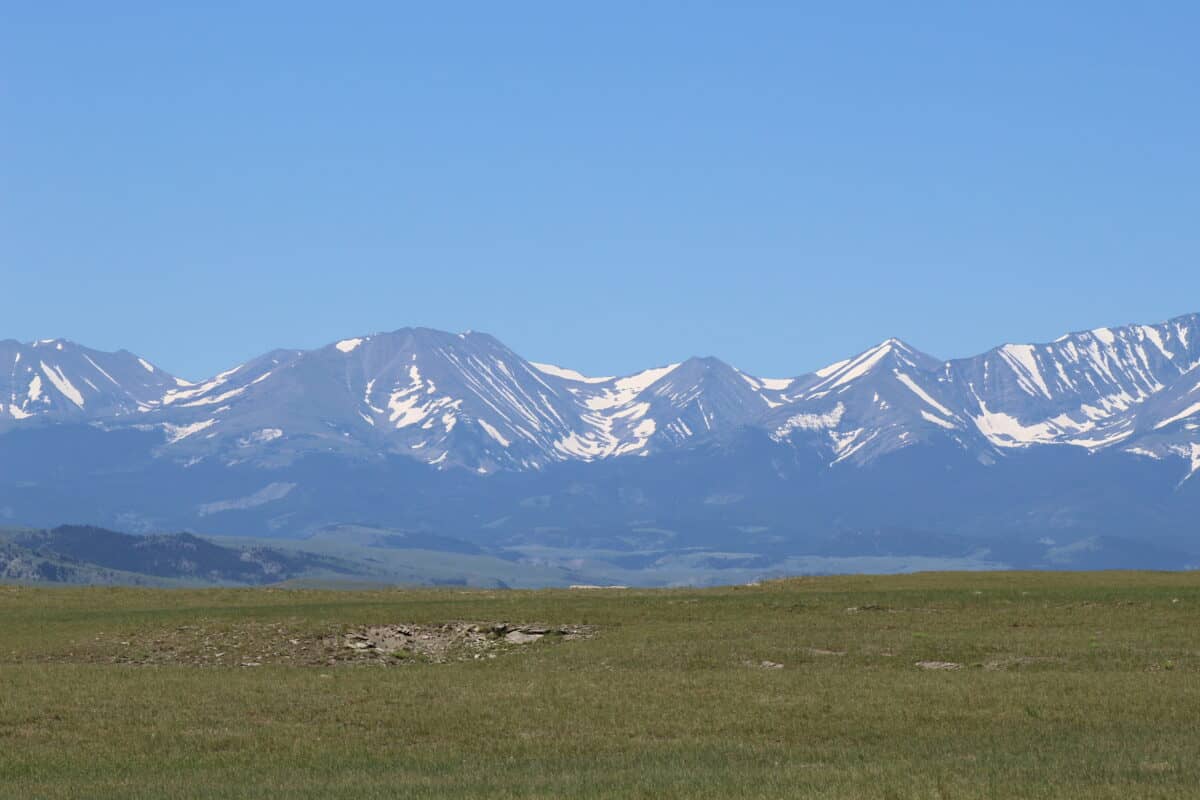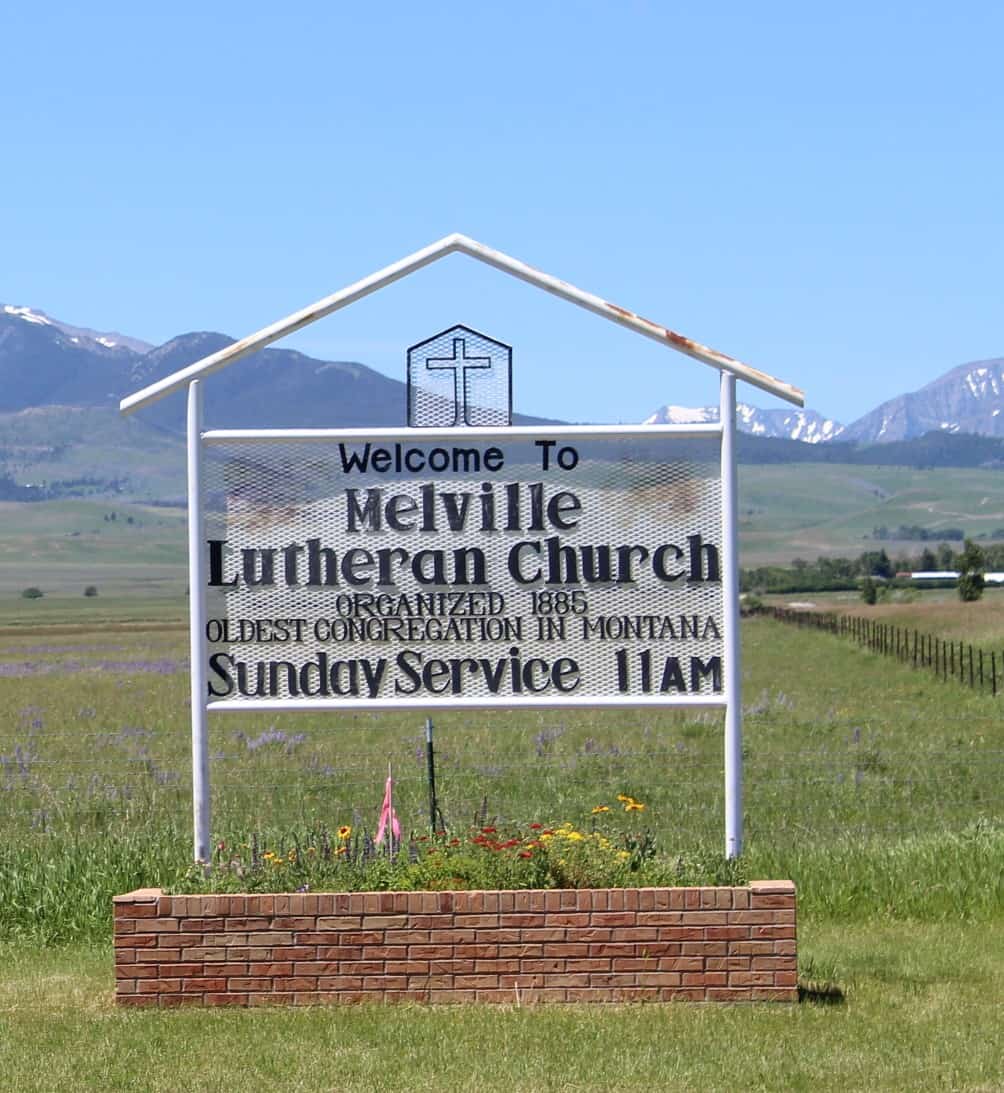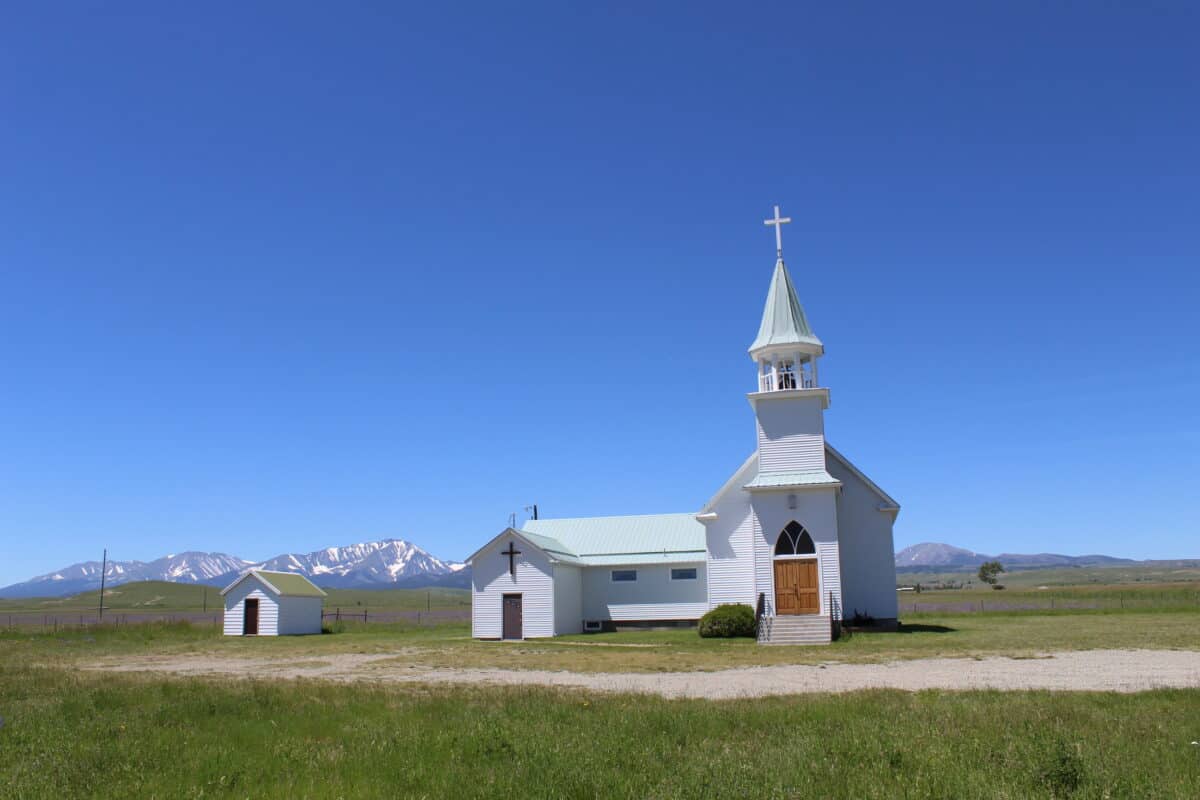
Some of the early Norwegian settlers in Montana came from the Rushford area in Fillmore County, Minnesota. Several people in Rushford organized a society with the aim of exploring for better land in Montana. Because of several years with crop failures caused by hail, bugs, and rust in Minnesota they began to dream about better land further west.[1] Two members of the society, Henry Ellingson and Ole Jenson, travelled west in spring 1881 on the Northern Pacific Railroad. This step-by-step migration story covers a large number of people, which for most of them began in Trondheim in mid-Norway and ended in Montana. And like in many similar stories, some of the migrants were given the role of – or took the initiative to act as – forward scouts.

From Trondheim via Minnesota
Many Norwegian immigrants to Wisconsin and Iowa had settled in southeastern Minnesota in the early 1850s, especially in western Houston and eastern Fillmore counties, just across the border from Iowa. Many came before the land had been surveyed, some as early as 1851 and 1852. “By 1875 a fairly large number of Norwegian families were living in every township in Fillmore County,” wrote Carlton Qualey, “especially in the eastern tiers. In Houston County the great majority were in the western townships.” Both counties had a very high density of Norwegians, and most of them still spoke Norwegian. “The district became the mother area for a large number of Norwegian settlements in western Minnesota and the Dakotas”.[2]
The Northern Pacific Railroad reached Bismarck, North Dakota, in 1873. Building came to a standstill when the economic depression made itself felt. The railroad company went bankrupt but was refinanced at the end of the 1870s. Work on the railroad west from Bismarck and into the Yellowstone Valley in Montana continued in 1880.
The two Norwegians, Ellingson and Jenson, disembarked at the end of the railroad line at Green River, North Dakota. They continued on horseback, bringing with them pack horses into eastern Montana along the Yellowstone River. Ellingson knew very well where he wanted to go. His cousin Ben Hoyseth had recently settled together with John Hoff in Central Montana on Lower Sweet Grass Creek, at the confluence with the Yellowstone.
Who was Henry Ellingson?
Henry Ellingson, or Henrik Ellingson Tomasstu-Gaustad, grew up in Byneset municipality to the west of the Trondheimsfjord, and west of the city of Trondheim. He was born on September 9, 1846, and emigrated from Byneset to the United States in 1865. He disembarked in Quebec, Canada, and continued on the railroad to Detroit, Michigan, and then by boat from Detroit to Chicago.
After his arrival in Chicago in May 1866, the 19-year-old Henry held various temporary jobs. He had absolutely no knowledge of English, but soon signed up for English class at night school. He found the heat, dirt, and unsanitary conditions on the streets of Chicago oppressive, and after a couple of months decided to move further west. Some Norwegians he knew had settled in Fillmore County, Minnesota, and Henry followed their lead. He arrived in Fillmore on August 1, 1866, just in time to get a job during the harvest. In spring 1867 he found short-term work with a lumber company at Menomonie, Wisconsin. During the summer he took a job in a sawmill at Stevens Point, Wisconsin, and worked there three years.
Building a future
When Henry Ellingson was back in Fillmore County for a short period in 1868, he bought a small farm together with a friend. He returned to Stevens Point to earn money for the necessary improvements, while his friend looked after the farm. In July 1870 Henry married Gina Becken, and in August the young couple, 24 and 20 years old, settled on the co-owned farm in Fillmore. Gina was born in Norway in 1850. She had emigrated in 1857 together with her parents Hans and Sigrid Bekken and her brothers and sisters. The family had lived for a while in Portage County, Wisconsin, but had moved to Waupaca County. Henry and Gina took over the whole farm in 1871, and in 1873 bought another 120 acres of land.
Since his arrival in Chicago in 1866, Henry had used every opportunity to improve his English skills, not least the writing of the English language. His language proficiency became an important asset in the late 1870s, when he became county assessor in Fillmore County. He also served six years on the board of Township supervisors in Fillmore County.[3]
Ben Hoyseth and John Hoff
Benjamin Hoyseth, Henry Ellingson’s relative, was born on September 9, 1852, at Borsa, Trøndelag County, Norway, and emigrated to the United States in 1871, at nineteen. At first he worked in the logging camps and sawmills in Wisconsin, then he moved west to Montana and got work in Virginia City. During his time in Virginia City, Hoyseth got to know the Norwegian immigrants Eric Solberg and John Hoff well. The three young men left Virginia City together in 1879, eager to find a good place to homestead further east. When they had traveled eastward along the Yellowstone River for some time, they found a place they liked. The Lower Sweet Grass Creek flowed into the Yellowstone River where they chose to locate. The landscape reminded them strongly of the landscape they had left in Norway.[4] Only four other settlers lived there when they arrived.
John Hoff was born on August 11, 1851, in Orkdalen, another municipality in Trøndelag County. He emigrated to the United States in 1872, at the age of twenty-one, and got his first job in the iron mines in Ishpeming, Michigan. Hoff continued to work in the iron mines for several years until he began worrying about his health. He was still unmarried when he arrived in Howie, Sweet Grass County, in 1879.[5]
Hoff chose to move from Howie to the Norwegian settlement Melville in 1885. He joined forces with Peter O. Fallang, and the two men became sheep ranchers. He married Carrie Forsythe in Livingston in 1889. They had no children of their own, but raised Carrie’s niece Dora, Ben Forsythe’s daughter, after the death of his wife.
A better future at the foot of the Crazy Mountains?
When Ellingson and Jenson stayed at the homesteads of Hoyseth and Hoff, they were advised to travel north up along Sweet Grass Creek towards Crazy Woman Mountain. Twenty miles due north of Big Timber, on Sweet Grass Creek, the two men found land they liked very much. The view was magnificent. Wherever they went and whatever they did, the Crazy Mountains were always in the background. The banks along Sweet Grass Creek were lined with cottonwoods. Long stretches of prairie and bottomlands were found along the creek, with rolling hills and jagged bluffs in the foreground. Porcupine Butte was prominent among the bluffs.
The valley around Melville had more than enough good land for all interested Norwegians back in Fillmore County. On the return trip the two men floated down the Yellowstone River east to Miles City on a skiff they had built. Back in Fillmore County they presented their report to the “Montana Society”. Several other members of the society decided to move west to the Sweet Grass country.
Henry Ellingson and his family were the first to move. The farm was sold, as was a lot of personal stuff. Equipment the family would dearly need, was put into three covered wagons. Seven horses and a few head of cattle tagged along behind the wagons. Henry and Gina Ellingson brought with them four children – Edwin, Susanna, George, and Emma – as well as Gina Ellingson’s eighteen-year-old brother Peter H. Becken. He had lived with the Ellingson family since he was nine years old. He was born at Scandinavia, Wisconsin, on May 12, 1863.
The Ellingson family moved to Sweet Grass in 1881
Wagons and livestock were loaded into railroad cars at St. Paul, Minnesota. The end of the line was now in Sentinel Butte, North Dakota. On their way west through the Yellowstone Valley the wagons had to be ferried three times across the river. In August the family arrived at the homestead Ellingson had chosen in the Melville area. The three wagons served as shelter until a house could be built. First priority, however, was to mow and cure enough hay to secure their livestock for the winter.
They transported lumber to build the house from the north fork of the Musselshell River, about 60 miles away. Finally, in October, the family moved into the house. Before winter set in, a barn for the livestock was ready as well. Ellingson had brought with him his carpenter tools from Minnesota and did all the carpentry work himself. He also made the furniture, such as chairs, benches, tables, and bedsteads. All the work he had planned to do before winter, he had finished by November. Gina was pregnant when the family left Fillmore County, and on November 15, Oscar Ellingson was born. He was the first white child born in Melville.
The first two seasons before the railroad reached Big Timber, the Ellingson family bought groceries and other supplies twice a year in Bozeman, a hundred miles to the southwest. The most common food during the first winter was venison. In spring 1882, Ellingson and his sons brought with them so many elk-hides to sell in Bozeman that they could pay for a year’s supply of flour.[6]
Education was of great importance, argued Ellingson
The children in the new community needed a school and a good teacher, Ellingson argued. With the help of the County Superintendent at Bozeman a new school was established. The school district extended from the crest of the Crazy Mountains to the county line in the East and from the Meagher County line on the North to within four miles of the Yellowstone on the South. When another group of Norwegians from Minnesota arrived in Melville in fall 1882, the schoolhouse was ready. Among the first pupils were children from mixed Indian families in the vicinity. Ellingson put a lot of work into hiring a first-class teacher, who naturally lived with the Ellingsons. The school was also used as a church and for social functions, including the first election in the Melville Precinct.
More Norwegians came to scout out Melville
Other members of the “Montana Society” in Fillmore County accepted Ellingson’s choice of land in Montana, but they wanted to see it with their own eyes first. Several men traveled to Montana to inspect the land in fall 1881, before they sold their own land in Minnesota. P.O. Fallang, B.O. Forsythe, J.M. Dahl, Iver H. Hoyem, Andrew Berg, and J. Gundersen were members of this group. To finance their travel west on the railroad, the men went to St. Paul and asked if they could work their way on the Northern Pacific Railroad? They got work all through Dakota and into Montana, and their families moved to Montana in 1882.
Peter O. Fallang from Hadeland, Norway, and Fillmore, Minnesota
The leader of the second group came to hold a strong position among the Melville settlers. Thirty-five-year-old Peter O. Fallang was born on May 18, 1846, at Gran, Hadeland, Norway. His father was a skilled carpenter and mechanical inventor in the Gran municipality, but died during the cholera epidemic in Norway in 1853. Seven-year-old Peter was well taken care of. His mother Anne (Halvorsen) was the daughter of a miller and leading farmer in the Gran community. At the age of twelve Peter entered high school and graduated in 1861 at the age of fifteen. He worked on the home farm for some years until he joined the military school of the regular army in the Norwegian capital Christiania on October 1, 1865.
Two years after graduation from military school on July 31, 1868, he married Inger Maria Olsen in Christiania on July 27, 1870. She was born September 2, 1842, at Svarstad, Laurdal, Telemark County. Peter O. Fallang did not leave the military in Christiania until May 1873, when the family decided to emigrate to the United States and settled in Rushford in Fillmore County, Minnesota. To earn good money in a short time, Fallang worked in the Wisconsin woods from October 1873. In spring 1874, he bought a piece of land in Black Brook, Wisconsin. The family lived there four years but returned to Rushford in 1878. Fallang began as a seller of farm machinery and continued in this occupation until the move to Montana. In October 1881 the family moved to Melville.[7] After Sweet Grass County was organized in 1895, Fallang was elected county commissioner. He was a driving force behind the establishment of the Sweet Grass wool mill.


Step-by-step migration continues
The Fallang family were among the founders of the Norwegian Lutheran church in Melville. They had six children and many of them continued to live in Montana throughout their lives. Olga Birgitte married Carl Tangen of Sweet Grass County. Their oldest son Oscar Alfred was sheriff in Sweet Grass County and a veteran of the Spanish-American War. Inga Mathilde married Peter Mayelsen, Sweet Grass County. Two of the children continued the family’s step-by-step migration story. The younger son Herbert Christopher moved to Seattle, and their daughter Agnes Constance married Andrew Olsbach in Ballard, Washington.

All photos (C) Inger Kari Nerheim
[1] Atkins, Annette, Harvest of Grief. Grasshopper Plagues and Public Assistance in Minnesota, 1873-78, Minnesota Historical Society Press, St. Paul, 1984.
[2] Carlton C. Qualey, Norwegian Settlement in the United States, Norwegian-American Historical Association, Northfield, Minnesota, 1938, p. 114-115.
[3] “Henry Ellingson”, Pioneer Memories, vol. I, published by the Pioneer Society of Sweet Grass County, Big Timber 1960, p. 102-103.
[4] “Ben Hoyseth”, Pioneer Memories, vol. I, p. 148.
[5] “John Hoff”, Pioneer Memories, vol. I, p. 141.
[6] “George Cook”, Pioneer Memories, vol. I, p. 102-103.
[7] Progressive Men of the State of Montana, A. M. Bowen and Co., Chicago ca. 1903, p. 825; “P. O. Fallang”, Pioneer Memories, vol. I, p. 111-112.